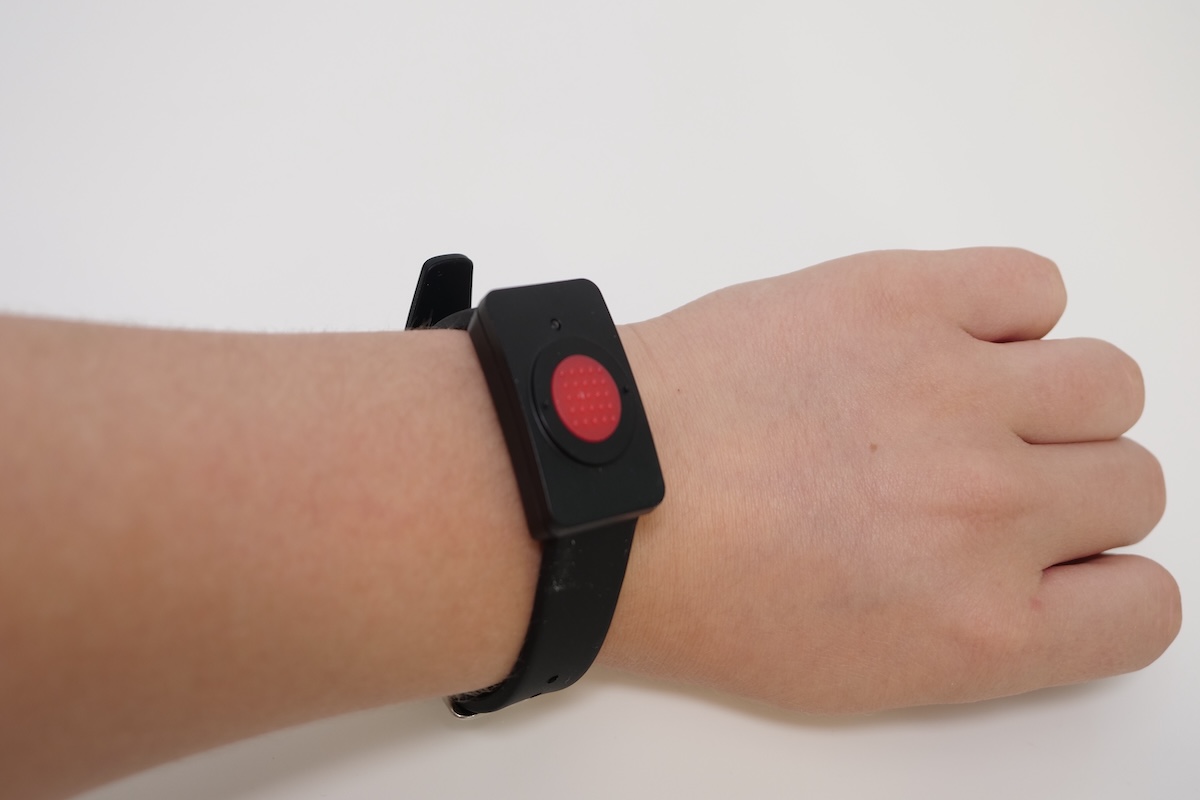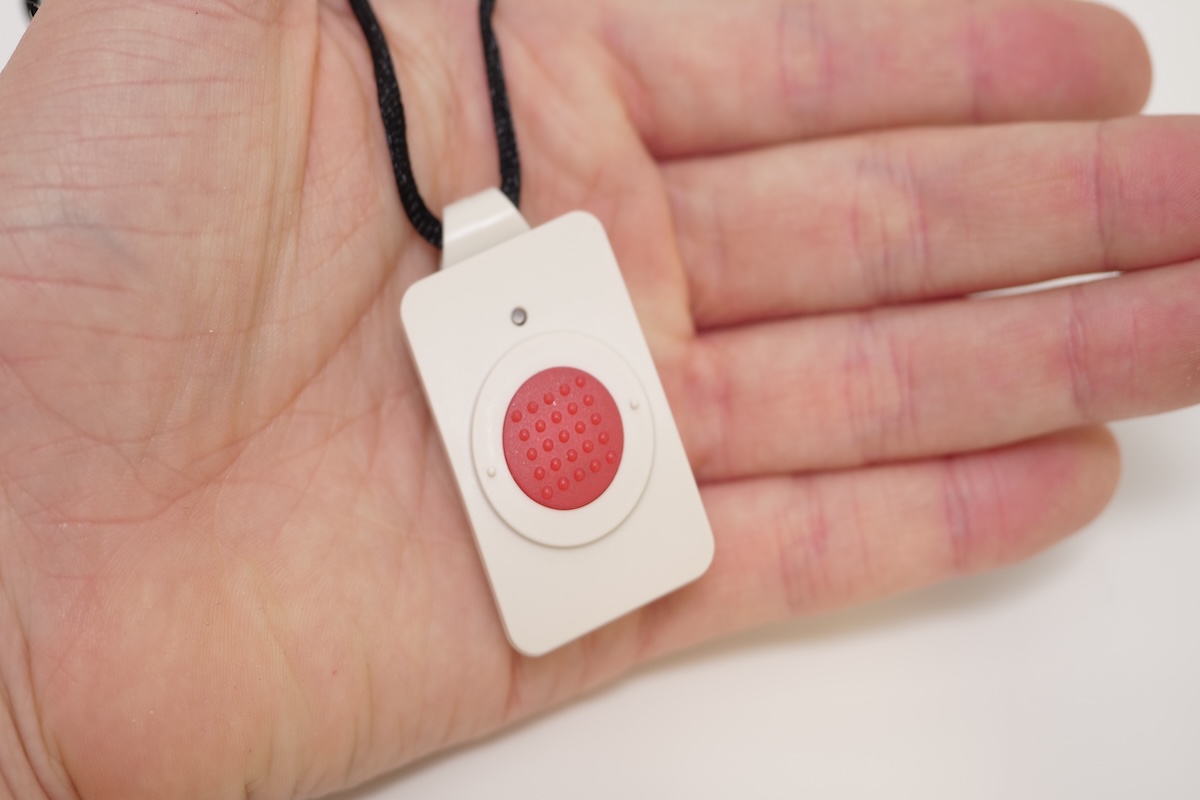Table of Contents
Falls are a leading cause of disability in older adults and can drastically impact a person’s ability to perform daily tasks. Unfortunately, one fall often leads to more, resulting in hospitalizations and lengthy recoveries that can disrupt life, incur significant medical costs, and take a toll on mental health. However, home modifications and awareness of fall risks can help prevent falls. In an emergency, tools like a medical alert system can help you or your care recipient get help fast.
“[Medical alert systems] can bring peace of mind to family members and enhance safety for those at risk at a lower cost that round-the-clock, in-person caregiving,” says Anne Sansevero, RN, AGNP, MA, CCM, the Board President of the Aging Life Care Association.
Navigating the many medical alert systems available can be daunting. One of the most recognized names in home security, ADT, also offers a line of medical alert products. But how do they compare to other options? Our Handbook Team tested these products to help you choose the best medical alert system for your needs.
Read on for our in-depth review of ADT Medical Alert, including pricing, pros and cons, and model features.
Our verdict
We appreciate ADT’s transparent pricing, which means there are no hidden fees to worry about. The product range is straightforward, which we think makes it easier to find the right unit for various situations. The setup is also simple and hassle-free.
However, based on our testing experiences, the systems have significant drawbacks, including tech issues and slower-than-average response times.
ADT Medical Alert On-the-Go System
Insights from our testers
The ADT On-the-Go Medical Alert system includes a mobile base unit that you can wear around your neck or on your belt, an emergency button bracelet or necklace, and an optional fall detection necklace. The package also includes a quick setup guide, a user guide, and a user manual for the fall detection necklace.
The mobile base has three buttons: emergency call, test, and power. The unit also contains a speaker, so if you’re outside or running an errand and an emergency occurs, you’ll speak with the 24/7 monitoring center right through this unit. The mobile base comes with a lightweight necklace with an emergency button that you can wear if the base unit is too heavy.

If you have an emergency, you press the necklace button, triggering a call through the mobile base unit. But because the necklace has to stay within 100 feet of the base unit, you’ll have to keep both on you. This may work fine for people who don’t mind clipping it to their belt or putting it in a purse or backpack. Our testers say the necklace has a thick, non-adjustable lanyard that’s comfortable to wear. If you pay extra for the fall detection necklace, you’ll also want to keep the base unit on your person when out and about because it has the same range of limitations as the standard necklace. Our testers say this necklace has a thinner, adjustable lanyard that’s also lightweight and comfortable to wear.
Setting up the system is straightforward. Simply plug it in while it’s in the charger and conduct a test call by pressing the “T” button on the side of the device. The manual for the unit features easy-to-read fonts and clear diagrams.
The mobile unit’s emergency button features an LED light that blinks red when the battery has two hours left. When the mobile unit is plugged in, a solid red light indicates it’s charging, which takes up to three hours. A green light indicates a full charge lasting up to 40 hours. Unlike the rechargeable mobile unit, the fall detection necklace has a battery that should last up to 18 months. When the battery is low, it should flash an amber color. While ADT promises to replace wearables with dead batteries, our testers note there are no clear instructions on the replacement process.
Our Handbook Team says the device’s speaker is subpar, making it difficult to hear the monitoring center. That said, if you can’t hear the monitoring staff speaking to you, they will still attempt to communicate with you and notify emergency services if necessary.
Occasionally we’ve found that prompting a call through a button press or test fall triggers a response to the user’s cell phone instead of the monitoring center calling the mobile unit. If you don’t have your cell phone and the system with you, you might encounter issues, which isn’t ideal for a system that’s supposed to be for on-the-go use. Our testers say they also discovered that the device won’t trigger a call if one was already activated in the last two minutes.
While conducting these tests, the response time has been consistently under one minute, and the monitoring center has been able to accurately locate the user with GPS location services. However, the unit doesn’t always accurately detect slow falls During a slow fall, we wear the medical alert system while sitting in a chair, then bend forward to put our knees on a mat. From there, we lie completely flat on our stomachs for at least 30 seconds. .
In some instances, our testers also say the device continues to detect a fall and contact emergency services even after confirming verbally with monitoring staff that it was a false alarm.
If you regularly carry your cell phone when you’re out and about, you may want to consider ADT’s mobile system. Ultimately, our Handbook Team doesn’t feel confident enough about the on-the-go device to recommend it.
From our tester
“I got a call twice on my phone after pressing the button on the mobile device. It did not connect me to a person through the mobile system itself. The representative says it depends on the two-way calling on the device that day. She said it can be ‘iffy.’”
ADT Medical Alert Plus System
Insights from our testers
This device’s installation is simple: Plug it in and turn it on. The base unit has an interface featuring a red emergency button, a blue reset button (though the monitoring center can reset the device for you), a volume and test button, and an on/off switch on the back.

The front display shows battery life and signal strength. Adjusting the volume temporarily switches the display to blue bars to indicate volume status.
The Plus package comes with:
- Quick setup guide.
- User manual for the base system.
- Manual for the fall detection necklace (optional).
- Cellular base system.
- Choice of neck or wrist emergency button.
You can add the fall detection necklace or wall-mount button for an additional fee.
To test the unit, simply hold down the button for six seconds. The fall detection device is the same necklace that comes with the mobile unit. While it’s fairly good at detecting fast or hard falls, the necklace isn’t as effective for slow falls. The fall detection necklace has detected most of our fast falls To test fast falls, we drop each device from shoulder height and let it remain on the mat for at least 30 seconds. , but we’ve experienced connections that took longer than a minute. While we appreciate that this base unit has clearer audio compared to the mobile system, inconsistent connections and the limited working range of the necklace from the base unit make us concerned about its reliability.
Focus group on medical alert systems
Our team conducted a focus group on medical alert systems. Focus group participants said that device quality and dependability are more important than price.
In case of a power failure, the unit runs on backup power, lasting up to 24 hours. When the backup battery is low, a voice prompt will notify you.
The wearables have a range of up to 600 feet from the base unit, which is limited when compared to competitors, which frequently offer ranges of at least 1,000 feet. This smaller range might best suit those who live in apartments or condos.
From our tester
“This device has a range of up to 600 feet. This range is a bit underwhelming considering competitors like the Bay Alarm Medical SOS home has a range of up to 1,000 feet, and the MGHome Cellular has a range of up to 1,400 feet.”
ADT Medical Alert Basic System
Insights from our testers
The ADT Medical Alert Basic System is designed for people who prefer or need a landline connection, like those who live in areas with spotty cellular service.


To keep you connected to the base station, this device comes with a non-adjustable emergency button necklace that our testers say is quite long. It rests above the belly button and can easily get caught on objects. You can opt for a bracelet instead, which is comfortable to wear but has an outdated look. We don’t like that the units and wearables have a distinctly medical appearance, contrasting with the slightly more modern-looking Plus and On-the-Go systems.
In the event of a power outage or loss of connection, the device will audibly notify you with “power failure, check power cord” and “power restored” when power resumes. The backup battery provides up to 20 hours of additional power.
According to our testers, the wearables range about 150 feet from the base station, contrary to the 300 feet outlined on the website. If you decide to purchase this home unit, you’ll want to perform a distance check around your house so you know if you have any spots that don’t allow you to connect.
From our tester
“The device pendants only function 150 feet away from the base station.”
Compare ADT Medical Alert Systems, as of October 2024
| Monthly cost | $31.99 | $39.99 | $41.99 |
| Connection type | Landline | AT&T Cellular | AT&T Cellular, GPS |
| Included devices | In-home base unit, necklace | In-home base unit, necklace or wristband | Mobile base unit, necklace or wristband |
| Fall detection | No | Yes (optional) | Yes (optional) |
| Range | 300 feet | 600 feet | 100 feet |
| Home temperature monitoring | Yes | Yes | No |
| Battery life | 12–20-hour backup battery | Up to 24-hour backup battery | Up to 40 hours |
| GPS | No | No | Yes |
| Optional features | Additional necklace, ADT lockbox | Fall detection, wall-mount button, ADT lockbox, additional necklace/wristband | Fall detection, wall-mount button, ADT lockbox |
ADT Medical vs. competitors
| Monthly cost | $31.99–$41.99 | $24.95–$43.95 | Starts at $44.95 |
| Range | 300–600 feet | 1,300 feet or unlimited | 1,400 feet or unlimited |
| Connection type | Landline, AT&T Cellular, GPS | Landline, AT&T Cellular, GPS | Landline, AT&T Cellular, GPS |
| Fall detection | Optional for Plus and On-the-Go systems for $11 per month | Optional | Optional |
Our testing experience
When shopping for a medical alert system, you can only learn so much information by searching a brand’s website or speaking with a sales representative. You can get a general idea of features, but you won’t know what it’s like to use it. Is it simple to set up the base station? Is the help button necklace comfortable to wear? How easy are the buttons to press?
That’s why we do the testing for you. Based on our experiences, we want to provide the most helpful information about our favorite medical alert systems.
The Handbook Team tested 49 medical alert systems across 14 brands:
- ADT
- Aloe Health
- Bay Alarm Medical
- GetSafe
- HandsFree Health
- LifeFone
- LifeStation
- Lifeline
- Lively
- Medical Alert
- Medical Care Alert
- Medical Guardian
- MobileHelp
- UnaliWear
When choosing medical alert systems to test, we consider well-known brands with a generally positive reputation. Our team picks brands with various pricing options, device designs, and safety features.
Our testing process looks like this:
The Handbook Team reviews a 30-question checklist while setting up and testing each medical alert system. We also follow each device’s user guide and note what is intuitive or difficult about the setup process.
From our tester
“The MobileHelp Classic has super simple directions with large pictures and fonts. The Quick-Start Guide is larger than others and is super simple to follow.”
We spend most of our testing calling the monitoring center since this is the most important feature of any medical alert system. If the device has fall detection, we attempt six additional calls with fall detection tests.
From our tester
“For all fall tests, we wait 60 seconds with the device still on the ground before claiming whether the test was successful. Many fall detection devices don’t register a fall if it’s followed by sudden movement.”
While it’s difficult to duplicate true falls in a test environment, and more real-world fall data is necessary for a standard accuracy rate of fall detection devices, we test fall detection accuracy with a uniform testing method.
Our team conducts three “slow” and three “fast” test falls while wearing the fall detection device. We start all slow falls by sitting in a chair at 90 degrees and dropping to our knees before falling face down on a mat.
For the fast fall, we drop the device from shoulder height to the mat to replicate a fast, hard-impact fall.
“Generally speaking, a hard fall is a fall that can be difficult to stop, happens quickly, and results in a strong impact to the body,” says Sean Marchese, a registered nurse with more than 20 years of experience. “A slow fall is a fall that occurs more gradually, and the impact is likely weaker. However, individuals are not immune to injury after a slow fall.”
If you or your care recipient have a higher risk of falling, Marchese recommends being proactive and speaking with your doctor about assistive devices and prevention strategies.

What you need to know about ADT Medical Alert
Our overall thoughts about ADT Medical Alert
ADT is a well-recognized brand in the home security space. Its subsidiary, ADT Health, offers a line of medical alert systems for in-home and on-the-go use.
While we appreciate the company’s transparent pricing, we did flag some notable reliability issues during testing.
What we like about ADT Medical Alert systems
We like that ADT has been in business for over 20 years and is a well-known home security brand.
We feel that the brand’s medical alert systems are easy to set up and use, which may be important for people uncomfortable with technology. We like that they have three system options that cater to different needs. We also like the option to add a lockbox A lockbox is an accessory you can typically add-on to your medical alert purchase that stores a house key. It is usually attached to the outside of your home, like on a doorknob, so first responders can access your home in an emergency. to any package.
We also appreciate that ADT offers customers the option to purchase additional necklaces and wall-mount buttons. ADT also has a fairly transparent pricing scheme for its medical alert systems, with monthly fees free of activation costs or cancellation penalties.
Our ADT medical alert system complaints
If you’re looking for a no-frills medical alert system, ADT’s basic landline package might work for you, but it doesn’t come with fall detection. Although the Plus and On-the-Go systems have the option to purchase fall detection, our testers note response times were slower on average than some other brands we’ve tested.
Our testers also question this brand’s reliability, including glitchy communication with monitoring centers. The monitoring staff called our cell phone (after we triggered a fall) instead of the base unit, with staff indicating there is no way to control the two-way communication.
Volume is also an issue when communicating with monitoring center staff through the Plus and On-the-Go systems.
Read more about medical alert system costs.
Frequently asked questions
Fall detection is an optional ADT Medical Alert feature that costs an additional $11 per month but only with the On-the-Go and Plus models.
Medicare doesn’t typically cover medical alert systems. However, some Medicare Advantage plans may offer coverage. Check with your provider to find out more about what your plan covers.
Each package comes with a base system and a wristband or necklace. You can also add an additional wearable to your package for an extra fee.
- Appeadu, M. K., & Bordoni, B. (2023, June 4). Falls and fall prevention in older adults. StatPearls – NCBI Bookshelf. Link
- Adam, C. E., Fitzpatrick, A. L., Leary, C. S., Ilango, S. D., Phelan, E. A., & Semmens, E. O. (2024). The impact of falls on activities of daily living in older adults: A retrospective cohort analysis. PLoS ONE, 19(1), e0294017. Link
- Cui, Y., Liu, B., Qin, MZ. et al. Effects of early mental state changes on physical functions in elderly patients with a history of falls. BMC Geriatr 23, 564 (2023). Link
- Broadley, R.W., Klenk, J., Thies, S.B., Kenney, L.P., and Granat, M.H. (2018). Methods for the Real-World Evaluation of Fall Detection Technology: A Scoping Review. Sensors, 18(7), 2060. Link












